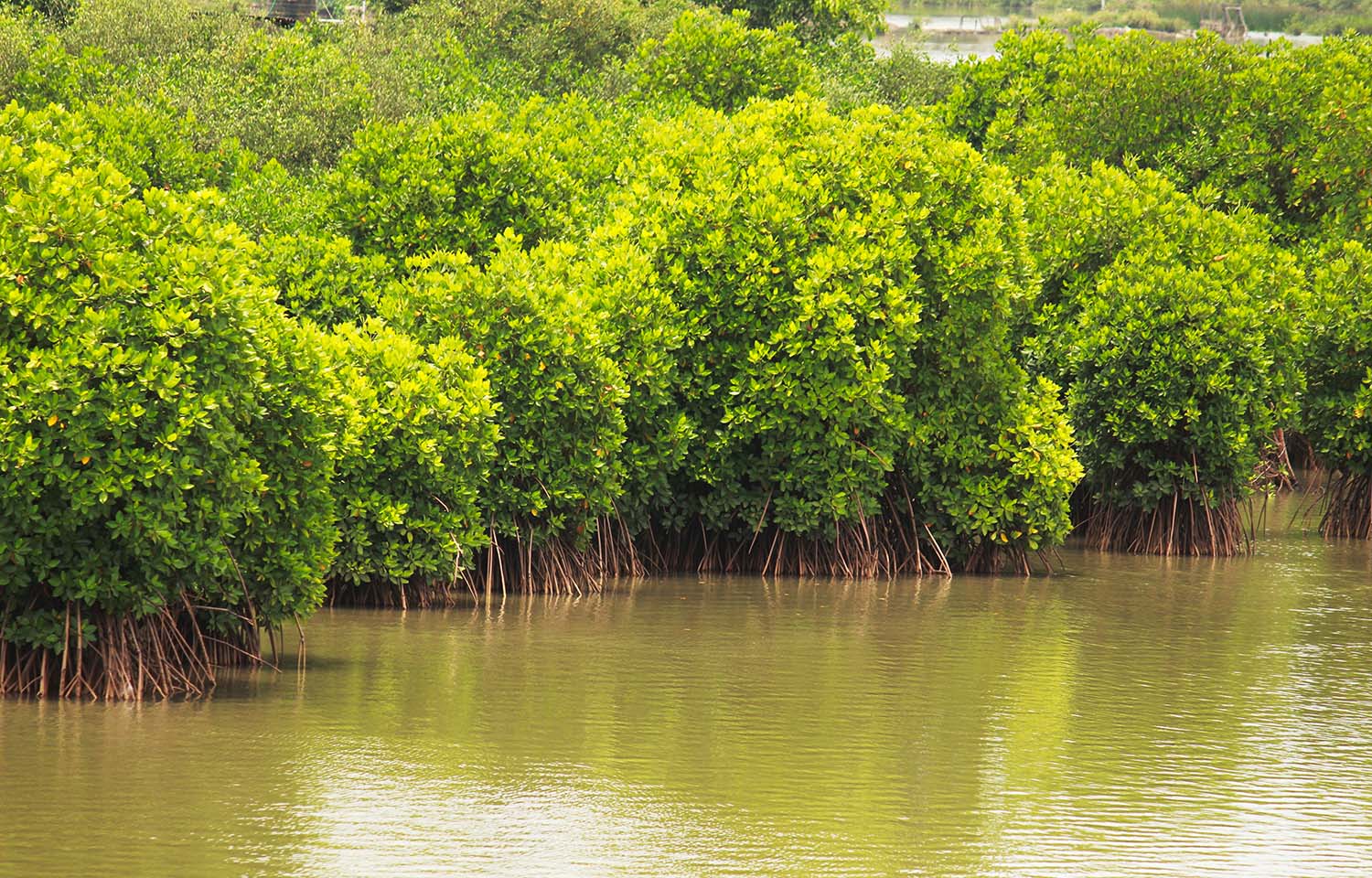Increased development of shrimp-farming ponds in India has not resulted in a net loss of mangrove acreage, according to a study conducted by Shrimp Insights.
Shrimp Insights is an industry consultancy led by its founder, Willem van der Pijl. In a commentary published 15 July, “Accusations about shrimp farming's role in widespread, continuous mangrove destruction in India unfounded,” van der Pijl asserted claims that India’s shrimp industry has caused mangrove degradation are overstated and that the total area covered by mangroves has actually increased between 1999 and 2022.
Van der Pijl used satellite imagery from GalaxEye Space and Clark Labs' mangrove database to determine from 1999 to 2022, only 0.3 percent of the total land covered with mangroves in east India was converted into fish and shrimp ponds, or 750 hectares, while the total net area covered by mangroves increased 8 percent, or 20,000 hectares – even though the land area covered by fish and shrimp ponds grew 87 percent in the time period.
“This results from solid conservation and reforestation efforts from the Indian government,” van der Pijl said. “While some deforestation has indeed happened over the past 25 years, contrary to common belief, the numbers show that the scale of conversion does not justify the accusations being put on the Indian shrimp industry: As proved in this analysis, the industry's impact has actually been quite limited. In my view, these claims are, therefore, unfounded, unfair, and unjust.”
India’s shrimp industry was responsible for significant mangrove deforestation before 1999, van der Pijl said.
“But, the COP 7 Conference in May 1999 was a key moment in the conservation of mangrove forests: Many governments made firm commitments to mangrove conservation when the Ramsar Convention was approved,” he said.
India’s adoption of the Ramsar Convention on Wetlands and the Coastal Aquaculture Act, its funding of mangrove plantation and wetlands conservation initiatives, and its strong push to raise public awareness of the environmental and social importance of mangroves have resulted in the preservation of thousands of hectares of mangroves, van der Pijl said.
“India is one of the world's largest shrimp producers and is home to some of the world's most significant mangrove habitats,” he said. “While the shrimp industry is vital for India because of its economic significance and the number of jobs it creates, mangroves are essential for coastal protection, biodiversity, and carbon sinking. It's in the interest of the industry and the wider Indian society that the shrimp industry and the country's mangrove habitats not only coexist but also flourish.”
Van der Pijl said shrimp farms compete for scarce land along coastal creeks and riversides in India’s east, but the vast majority of mangrove loss has been caused by tropical storms and other climate change-related causes, as well as the expansion of other industries, such as agriculture. Both climate-related causes and agricultural expansion combined, according to van der Pijl resulted in the loss of around 8,800 hectares of mangroves since 1999.
With this data in hand, Indian shrimp firms should fight back against accusations they are responsible for mangrove loss, van der Pijl said.
“If we take a moment to consider the market challenges the Indian industry faces in the wake of these claims, committing itself to supporting increased mangrove conservation and afforestation projects could significantly enhance its market image and consumer perception,” he said. “According to Indian legislation, companies must spend 3 percent of their three-year trailing average net profit on corporate social responsibility (CSR) activities; mangrove conservation projects would be a good place to start for some of the country's shrimp exporters in light of this situation.”
In 2022, around 385,000 hectares of India’s east coast were covered by fish and shrimp ponds, while around 260,000 hectares were covered by mangroves. The area covered by mangroves in Andhra Pradesh grew from 32,047 hectares in 1999 to 42,493 hectares in 2022, while in West Bengal, the total land covered by mangroves increased slightly from 189,555 hectares to 192,665 hectares.
Van der Pijl noted the Aquaculture Stewardship Council prohibits certified farms built after 1999 from clearing any mangrove forests, while those built prior to 1999 must rehabilitate 50 percent of the area originally cleared for the farm. The rule helps with the protection and restoration of mangroves in India, van der Pijl said.








